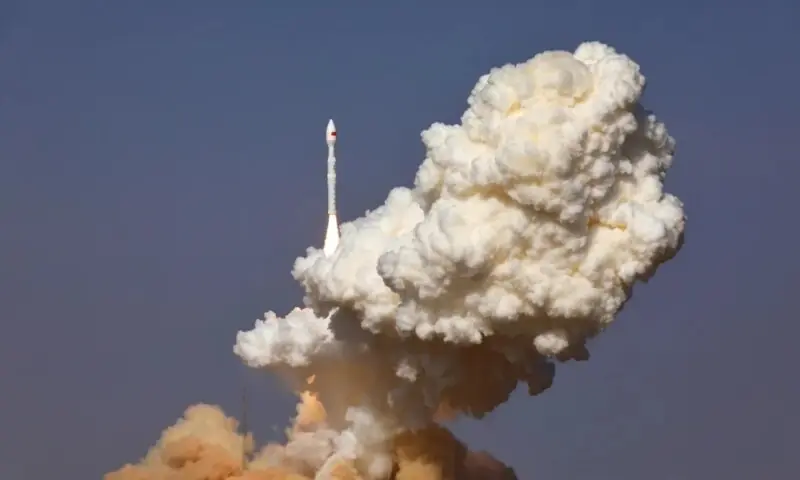Pakistan Space Agency on Sunday launched the country’s first hyperspectral satellite (HS-1) from a Chinese launch center, the Ministry of Foreign Affairs said, calling it “a critical step towards Pakistan’s space programme”.
Hyperspectral imaging is a type of advanced camera technology used on satellites to study Earth and space, according to a study published in the Journal of Computational Intelligence and Neuroscience.
Unlike normal satellite cameras that capture only a few colors (such as red, green and blue), hyperspectral cameras capture hundreds of very narrow color bands. This means they can detect small differences in light that the human eye, or even normal satellites, cannot see.
In a statement issued today, the Ministry of Foreign Affairs said, “Pakistan’s Space and Upper Atmosphere Research Commission (Suparco) has achieved a major milestone with the successful launch of Pakistan’s first hyperspectral satellite (HS-1) from the China Satellite Launch Center.”
According to FO, “HS-1 is equipped with advanced hyperspectral imaging technology capable of capturing data in hundreds of narrow spectral bands.”
This, in turn, “will enable accurate monitoring and analysis of land use, vegetation health, water resources and urban development,” FO said.
According to the statement, “the satellite is expected to significantly improve national capabilities in areas such as precision agriculture, environmental monitoring, urban planning and disaster management.”
“Its high-resolution data will support better resource management and strengthen Pakistan’s resilience to climate-related challenges,” he added.
HS-1 is also expected to “contribute to development initiatives including the China-Pakistan Economic Corridor (CPEC) by identifying geographical hazard risks and promoting sustainable infrastructure development.”
Calling the development a “fundamental step forward in Pakistan’s space programme”, FO said the launch “reaffirms Suparco’s commitment to harnessing space technology for national development”.
It also “highlights the long-standing collaboration between Pakistan and China in the peaceful exploration of space and its application for socio-economic progress.”
“Foreign Minister Mohammad Ishaq Dar praised the scientific and technical teams of Pakistan and China working on HS-1 for their commitment, professional excellence and exemplary cooperation,” the statement said.
On October 15, Suparco announced the upcoming launch of the HS-1 satellite from the Jiuquan Satellite Launch Center in China.
Last month, a senior Suparco official said the agency was integrating space applications into its disaster risk management framework, “paving a path based on science and international collaboration to better prepare for natural calamities.”
In July, the Ministry of External Affairs announced the successful launch of a remote sensing satellite from China, which aimed to “strengthen Pakistan’s agricultural surveillance and disaster management, among other capabilities.”
In August, Pakistan successfully launched a remote sensing satellite from a launch center in China. The satellite was aimed at strengthening Pakistan’s agricultural monitoring and disaster management, among other capabilities, according to a Foreign Ministry statement.








